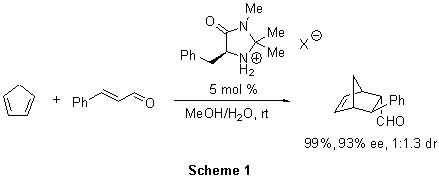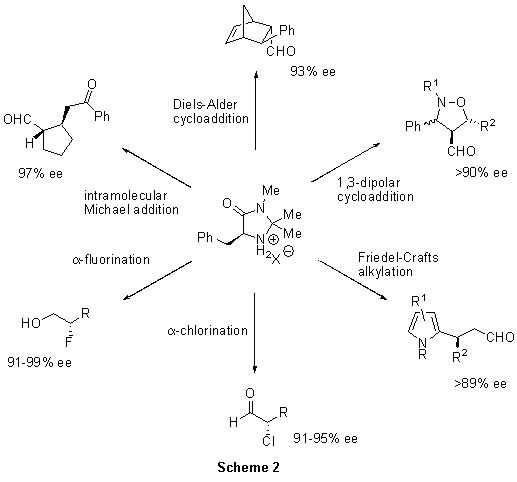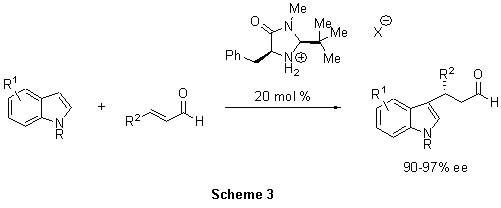Diazaphospholane Ligands for Catalytic Asymmetric Transformations
Introduction
The interest in asymmetric reactions has been growing for the past 40 years. To address the challenges of synthesizing chiral building blocks with high yields and high selectivities, researchers developed a broad range of catalysts. Two of the essential components for highly active and selective catalysts are the ligand and the metal. Professor Landis and co-workers developed a series of new ligands based on chiral 3,4-diazaphospholane structures. These ligands are highly active for enantioselective hydroformylation and enantioselective allylic alkylation reactions. These two transformations are essential to access a variety of chiral building blocks for the synthesis of more complex molecules.

Representative Applications
Synthesis of Isoxazolines and Imidazoles
The asymmetric hydroformylation reaction is a highly chemoselective transformation allowing the conversion of terminal olefins into optically active aldehydes. Despite the recognized powerful methodology of this transformation, it has been sporadically utilized on a commercial scale due to the low reaction rates, the challenges to control the region- and enantioselectivities simultaneously and the limited substrate scope. Professor Landis and coworkers developed a new family of ligands based on 2,5-disubstituted phospholane addressing these issues. Utilizing this newly developed ligand, Thomas and coworkers synthesized a series of oxazolines and imidazoles. Reacting vinyl acetate with Rh(CO)2(acac) and (R,R,R) or (S,S,S)-Diazaphos-SPE in a reactor with CO and H2 at 400 psi yielded the corresponding chiral aldehydes with 94% conversion and 96% ee. It is important to note that a catalyst loading of only 0.001 mol% is necessary to complete this transformation. Following this reaction Thomas and coworker ensured the conservation of the enantioselectivity by synthesizing the isoxazolines and imidazoles with overall good yields.

Reference
Asymmetric Allylic Alkylation
The asymmetric allylic alkylation reaction is an attractive reaction to form a new C-C bond with a desired nucleophile enantioselectively. Professor Landis and co-workers utilized this reaction to test newly synthesized chiral 3,4-diazaphospholanes (Diazaphos-PPE). With the presence of a palladium catalyst, these new ligands yielded outstanding conversions and enantioselectivities with a variety of substrates. Using 1,3-diphenylallyl acetate and 2-penten-4-yl acetate as reactants, with dimethyl malonate as the nucleophile, Clark and Landis demonstrated that Diazaphos-PPE is surpassing other ligands by giving high yields and selectivities for both substrates.

Reference
如要继续阅读,请登录或创建帐户。
暂无帐户?